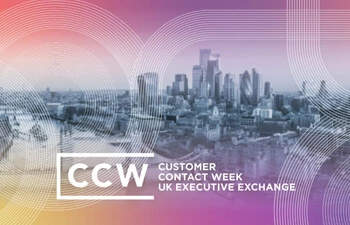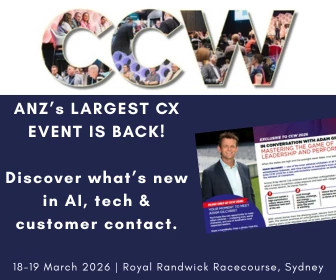CX trends in 2026: How to avoid the hype and drive real-world results
The third article in our CX trends series looks at how CX practitioners can avoid the hype while embracing innovation in CX
Add bookmark
In a world of choice and change, knowing which tools will help you do the job, which CX trends are worth your attention in 2026, or which direction your next strategic move should take, has become more complicated than ever.
Over recent weeks, CX Network has brought you the latest insights into how recent developments are likely to shape CX in 2026, including the trends that could change what customers want, how organizations can meet those needs, the latest developments in AI, and what organizations should do to prepare for it all.
But one million-dollar question remains: How can we avoid the hype that naturally comes hand-in-hand with rapid change? Read on to discover four ways our panel of CX experts advise practitioners to make thoughtful decisions that will drive real results.
To find out how to navigate the hype specifically around AI in CX, click here.

Don't miss any news, updates or insider tips from CX Network by getting them delivered to your inbox. Sign up to our newsletter and join our community of experts.
Ground your work in outcomes, not trends
To know which trends and developments are worth paying attention to, practitioners should consider the outcomes they want to secure and navigate innovation with purpose, says Yvette Mihelic, MBA, GAICD, CCXP, director of CX at John Holland Group.
“Focus on solving real problems and enhancing experiences, not just adopting technology for its novelty,” says Mihelic.
“Validate use cases through small-scale pilots and measure impact with clear CX metrics. Engage cross-functional teams to ensure solutions are scalable, ethical, and aligned with brand values. Staying curious but critical is key to navigating innovation with purpose,” she adds.
Echoing this sentiment, advisor and consultant Julia Ahlfeldt, CCXP, says practitioners should “look for tools that solve real problems, not problems to fit shiny new tools”.
Using artificial intelligence (AI) as an example, she says it’s easy to get swept up in what’s new rather than what’s needed. Ahlfeldt says: “The smart approach is to start with core CX and business challenges and then determine if (and how) AI can help solve them. AI is incredibly powerful, but not every use case is relevant for every organization. Building fluency, especially among leaders, is key to making informed choices that create meaningful value, rather than chasing the next big thing.”
As far as outcomes are concerned, building trust, reducing churn, and growing lifetime value provide a strong start. Ekaterina Mamonova, global head of broker proposition for Liberty Specialty Markets, says CX leaders must move beyond technology and “focus relentlessly” on these three outcomes.
She explains: “You must recognize that survey fatigue obscures warning signs of churn. If you stitch together sparse feedback with behavioral and operational signals – usage drops, failed transactions, contact center transcripts, chat logs, and complaints – you can build early‑warning models and closed‑loop workflows that trigger timely, personalized interventions.”
On how to keep customers in the long-term, she adds: “Remember, price wins the purchase, but experience wins loyalty. Map moments of truth, prioritize operational fixes that reduce friction and improve recovery, and link CX improvements to retention, repeat purchase and revenue metrics while protecting key brand moments with SLAs, agent enablement, and empowered escalation paths.”
Agreeing with Mamnova, Ahlfeldt and Mihelic, Amory Somers Vine, director of CX at Expereo, says the real transformation begins with clarity. ““It’s easy to get swept up in the hype around new technologies, but real transformation begins with clarity - knowing exactly what problem you're solving and how it improves the customer experience.
"At Expereo, we’ve learned that simplicity often delivers the greatest impact. Whether it’s automation or AI, the goal should always be to remove friction, not add it,” she adds.
She says the most effective CX strategies are built on the fundamentals of “listening to customers, empowering teams, and designing solutions that work in the real world”.
Understand how hype influences your organization
Nao Anthony, senior manager of operational excellence at Commonwealth Bank (CBA), says hype influences organizations in two distinct ways:
- Competitor behavior: Responding reactively to what others are doing, often without clarity of value.
- Customer maturity: As consumers become more technologically savvy, their expectations evolve faster than most organizations’ ability to respond.
"Hype has always shaped expectations for both organizations and consumers,” he says.
“In today’s AI-enabled world, technology awareness has become a level playing field between the customer and the service provider. The traditional advantage of ‘know-how’ no longer lies solely with organizations, especially in the age of agentic AI, where customers are increasingly informed, enabled, and empowered.
It means that to avoid falling for the hype, practitioners must take four proactive steps:
- Allow technology to enable transformation, not define it;
- Compete on purpose, not process;
- Empower the customer, rather than over-engineer the experience; and
- Avoid sub-optimization across the value chain
“Leaders who rise above the hype and focus on the fundamentals of purpose, transparency, and capability will define the next generation of customer experience excellence,” he says.
Remember what the customer actually wants
Personalization and hyper-personalization have been billed as the answer to customer retention for a number of years, and from marketing emails that address the customer by name, to advertising campaigns built on individual engagement and algorithms, capabilities have developed significantly over this time. But it’s worth asking if this is what customers truly want.
“We keep hearing that customers want a ‘curated, specific experience’, but like everything else it requires balance and we are at risk of going too far,” says Claire Cunningham, senior manager of Voice of Customer, Customer Insights and Planning for Coles. “It can start to feel creepy if your data pops up in unexpected places.”
It’s a fine line and, to stay on the right side, Cunningham says the trick is to avoid making customers feel like they’re being watched.
“When brands start using details like names or exact locations in spaces where people aren’t expecting it, it stops feeling like personalization and starts to feel like surveillance. Targeting by very-specific personas or purchase intent is super powerful and that’s the balance we should be aiming for: specific to that customer without the touch of a possible data breach,” she explains.
Babul Balakrishnan, head of CX operations for Thunes, agrees that brands need to rethink personalization. “It is starting to act more like a stalker than someone who is able to aggregate all your requirements and provide a tempered response,” he says.
Mamonova advises organizations should make personalization “selective, transparent, and demonstrably beneficial”. She explains: “Favor contextual real‑time personalization using minimal data, prioritize zero‑ and first‑party preferences, offer clear disclosures and granular controls, and show customers how their data improved their experience.”
Overall, however, customer needs don’t change that often. By way of example, Peter Aitken, head of customer strategy and insights for Kantar, says that in grocery the vast majority of people still shop at their local supermarket, not online, and most people still manage their finances with traditional banks, not fintechs.
“There’s always a lot of hype around the latest digital experience or the brand doing something new, but people’s needs don’t fundamentally change that much.
“That’s not to say that challenger or digital disruptor brands don’t teach us anything, but it’s OK to remember that you don’t have to lead the way on every new thing. It’s fine to be a fast follower,” he advises.
Aitken says practitioners should take the time to look at what other brands are doing and “adopt it if and when it makes sense for your customers”.
“We want to see brands use newer technologies like generative AI to actually solve problems in the customer experience, not just because it’s the latest thing,” he adds.
Define what success looks like and prioritize your ideas
Competing priorities have long posed a challenge for CX practitioners around the world. For the last three years, our annual research into the state of CX has found competing priorities to be the greatest challenge facing practitioners in their work. This feeling of overwhelm isn’t just bad news for individuals; in organizations it can result in “paralysis by analysis” and work that lacks direction and results.
Jeannie Walters, award-winning CX expert, international keynote speaker and founder of Experience Investigators, says the key to CX success is simply to get started.
“I encourage CX leaders to start somewhere. Too often, teams are unwilling to move forward and actually improve the customer experience because they're too busy analyzing which technology to roll out, how to optimize the tools they have, or which report will keep their leaders happy,” Walters says.
“Customer experience is delivered when it's actually managed. And management means prioritization of the right ideas. My best advice is to start small. Find a problem to solve and test out what you think might work. Then expand from there. Take action, and perhaps more importantly, know where you actually want to go,” she says.
Honor the value of time and experience
In the rush to implement AI-driven processes and experiences, digitalize the customer journey, and drive repeat sales, it’s easy to forget the basics.
Author Peter Cross says the future of CX will bring a “growing understanding of the value of time in customer experience” and that “the ongoing march of the experience economy will continue to increase customer expectation of the physical experience”.
“The more time poor the customer, the more they will judge the businesses that claim to serve them, on how well they respect the time they ‘invest’ in their businesses,” he says.
As a result, he says “highly frustrating multiple option contact centers” will come under the spotlight as Voice AI “starts to facilitate more natural, helpful, and efficient interactions and conversations”.
In the physical world, a greater understanding of the experience economy will also reshape how experience is designed and delivered.
“Brands and businesses will become increasingly clear on the role of their physical touchpoints to engage, inspire, connect or interact. True expertise and specialism will remain at the heart of great physical experiences. Great brands will start to draw back the curtain,” Cross says.
Quick links:
- How to navigate the hype around AI
- The top 10 CX podcasts to listen to in 2026
- How the big brands are revolutionizing CX design and journey management
All Access: Future of CX 2025

Join us to hear from industry leaders, innovators, and CX experts as they share insights, strategies, and tools for harnessing customer feedback to drive meaningful change.
Register Now


































